In the 2002 movie My Big Fat Greek Wedding, during the first meeting of the Portokalos and Miller families, Harriet Miller brings a Bundt cake as a gift. Maria Portokalos, the family matriarch, accepts it, then asks politely, “What is it?”
“A Bundt,” Miller replies with confusion.
“A bund?” Portokalos asks.
“A Bundt,” Miller replies crisply. To her, just the word explains everything: a tall, usually homemade cake with a hollow center, baked for everything from potlucks to sympathy gifts. Portokalos doesn’t recognize the term or significance at all. “There’s a hole in this cake,” she whispers to a relative.
Compared to all the frosted American favorites, Bundt cakes stand out. They’re never two-layered, and usually decorated with only a casual glaze or dusting of powdered sugar. Instead, the donut-shaped, fluted pan provides most of the flourish. Baking with one produces a pastry that looks like nothing else out there. Yet their shape is so familiar at American tables that they need no explanation. Bundt has even entered the American lexicon, like Kleenex or Advil.
But how did the Bundt cake become the icon it is today? The answer has a lot to do with a group of homesick Jewish women, a Texas homemaker, and the universal appeal of creative cakes that, thanks to clever design, are easy to make.
In 1946, H. David Dalquist arrived home from the war. Home for him was Minneapolis, Minnesota, where with his family he launched a plastic company. (He was a chemical engineer by trade.) A few years later, the family bought another company, one that sold metalware for the kitchen under the name of Nordic Ware. The name should offer a clue as to what they produced: kitchen goods for the largely Scandinavian immigrant community around them. The Dalquists liked the sound of Nordic Ware, and adopted the name for their whole enterprise.
Simultaneously, Rose Joshua, Fannie Shanfield, and Mary Abrahamson approached Dalquist with a plea. These women, members of a local Jewish volunteer group, needed him to make a very special pan. In Germany, bready cakes called kugelhopf or bundkuchen are still specialties today. Joshua was on the hunt for a modern pan that she could bake her mother’s recipe in, and the original pans could weigh up to 15 pounds.
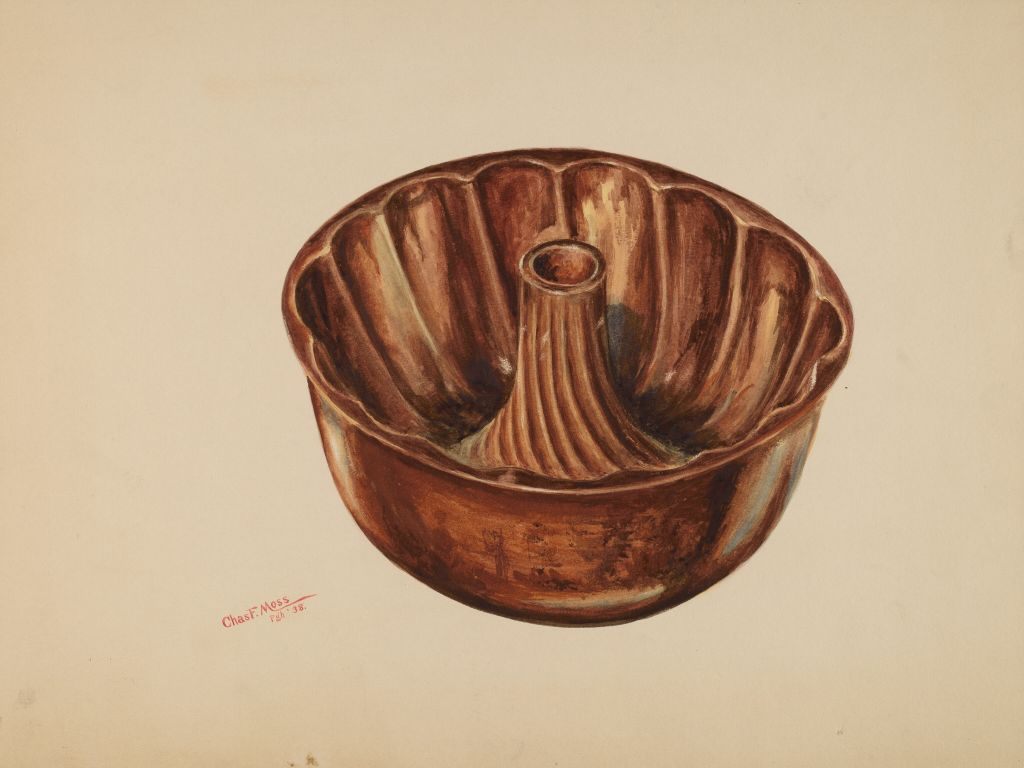
Dalquist molded Joshua a pan out of aluminum, one very similar to the kugelhopf pans still used in Europe today. But Dalquist’s design was odd enough for the U.S. that, decades later, one of his daughters remembers a plant manager telling her father, “If you can sell that thing, you can sell anything.”
Dalquist, riffing off the word “bund,” added a “t” to the name. (He was eager to avoid any association with the German American Bund, a prominent Nazi group established in the USA in 1936.) Then, he quietly added it to his inventory. Few people bought the pan. At least, until 1966.
Devout Catholic and Texas resident Ella Herlfrich had somehow gotten her hands on a Bundt. True, the original group of women who asked Dalquist to make them did sell small numbers of Bundt pans to family and friends, but that was for a fundraiser to support the building of schools and hospitals in Israel.
Nevertheless, Herlfrich entered her nut-studded chocolate Tunnel of Fudge cake into 1966’s Pillsbury Bake-Off contest. The secret ingredient in that cake was a packet of Pillsbury’s Double Dutch Fudge Buttercream Frosting Mix, which when added to the batter created a ring of creamy fudge suspended magically in the center of the cake. Her secret weapon, though, was her Bundt pan. The judges were impressed enough to award Helfrich second prize. (It consisted of $5,000 dollars and a tractor.)
While the first-prize entry faded from history, the Tunnel of Fudge made a huge splash. Food scientist Shirley O. Corriher went as far as to call the Tunnel of Fudge cake “THE chocolate cake of the 1960s.”
Pillsbury has held Bake-Offs since 1949, and winning recipes are published with great fanfare to drum up interest in company products. But this time 200,000 American bakers inundated them not with requests about powdered frosting, but rather to ask where to acquire one of these odd “new” pans.
Helfrich became something of a celebrity, and photographs from the time show her happily wearing her second place ribbon, her sleek dark hair sculpted enormously high in waves that eerily resemble the curves of the cake in her hands. The third line of her 2015 obituary mentioned her second-place win, and proudly noted how her invention had “introduced America to the Bundt pan.”
In the 1980s, Pillsbury discontinued the Double Dutch frosting, leaving many passionate fans of the Tunnel of Fudge cake aghast. Without the powdery mix, there was no way to suspend the chocolate fudge at the center of the cake. (Helfrich, on hearing the news, bought two entire cases to stockpile.)
But by then, Bundt was about far more than one fudgie recipe—dozens of popular recipes specifically called for the pan. The prior decade saw the rise of the Harvey Wallbanger cake, a boozy confection modeled after the popular cocktail. There was Maida Heatter’s famed lemon Bundt, which rose to fame after New York Times food writer Craig Claiborne published the recipe in 1970. The sock-it-to-me cake, rum cake, and even savories such as cornbread and meatloaf all found a cozy home in the Bundt pan.
The popularity of many of these recipes was powered by fun tricks like the Tunnel of Fudge. Explaining the soda in 7-Up cake, for example, was sure to garner attention at a potluck.
But the real appeal of Bundts, I believe, was how they democratized the baking of elegant-looking cakes. Making cake good enough for company had once required skills like baking even layers and dainty decoration. With a Bundt pan, average and even mediocre bakers could just mix ingredients and put the pan in the oven. An hour later, they’d have a great-looking dessert.
Then and now, this was by design.
“It’s something that is decorative, but you don’t need to be a master baker to achieve it,” says Nick Williams, a longtime Nordic Ware product designer. “You can take any pound cake, mix any family recipe, and use it in a Bundt pan to get a beautiful cake.”
Also, about that hole. By themselves, most bakers would struggle to evenly cook a towering, oddly shaped cake. But “the hole in the cake is not just decoration. It’s functional,” declares Williams. “It helps to guide heat to more surface area on the cake so that the center is not raw and you can evenly bake through the whole pan.”
Thanks to this design, even children could make something that looked like it came from a fancy bakery. Is it any wonder that Bundt pans became so popular?
Recipes such as the Harvey Wallbanger cake offered at-home bakers more to do with their Bundts. But later in the 1980s—after Pillsbury released a recipe for the Tunnel of Fudge cake that didn’t call for the discontinued frosting mix, but that most bakers agreed wasn’t the same—Nordic Ware hit on a genius idea: Bundt pans didn’t need to stay the same shape. They could be smaller. They could be weirder. They could be shaped like everything from haunted manors to octopuses.
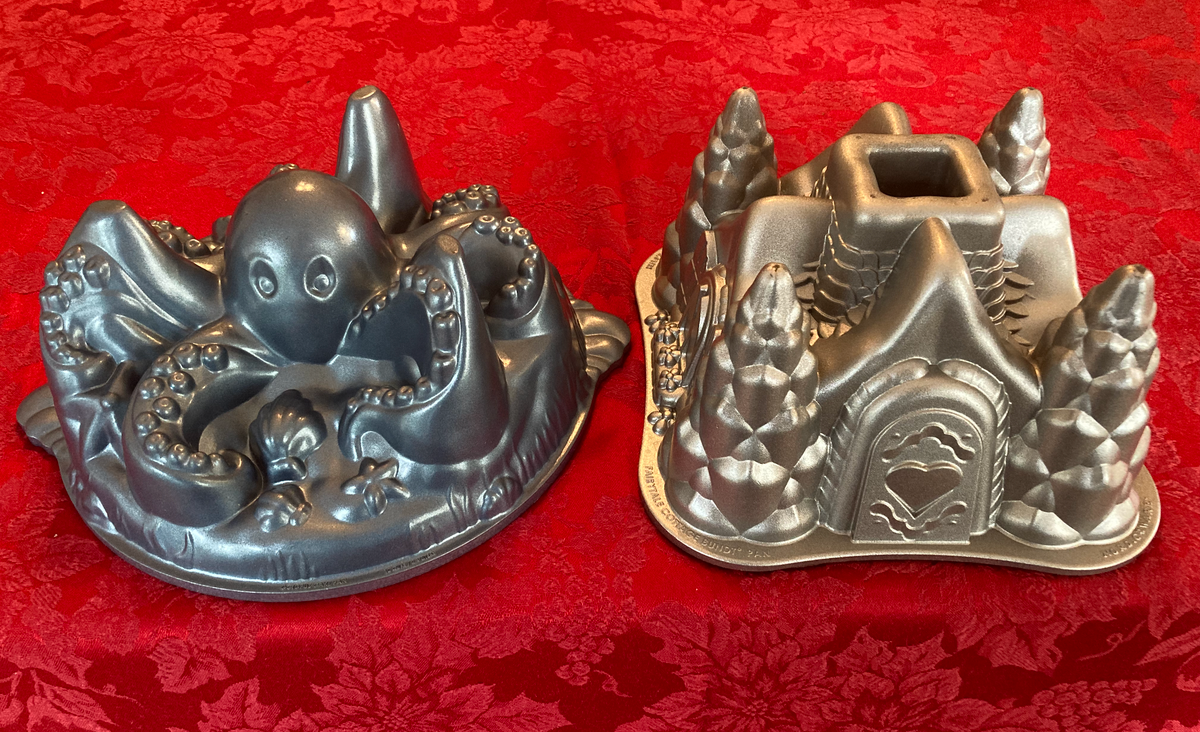
The original Bundt-pan shape is an American icon. But the new designs (there are dozens) kept the love affair fresh, allowing bakers to whip up everything from tiny “Bundtlettes” to giant Stars of David (Nordic Ware sells their Star of David pans as a tribute, they say, to the community that made the Bundt possible in the first place). All of which, despite straying further and further from the oven-friendly shapes of circles and squares, operated on the same principles as the original design.
Quite a bit of calculation has to go into every creation, Williams says. For example, details must be recessed to at least an 1/8th of an inch. Any less and batter will not form any recognizable patterns on the surface of the cake. This comes down to air getting trapped in too-tiny pockets, or butter and flour from the pre-greasing of the pan blocking the gaps.
“The flour will get trapped in small details, and it just doesn’t make the cake look as nice as it could,” Williams says. “We’ll open up that detail so that the batter can flow in, and push the oil or flour out of the way.”
A few years back, the kitchen retailer Williams-Sonoma requested a haunted house-shaped pan. Williams and the other designers came up with an appropriately ramshackle, pumpkin-covered pan, complete with the typical Bundt hole in the center. The design was so complicated, he says, that it completely overwhelmed the Nordic Ware computer modeling software.
Because of all the detail, not every cake thrives in a Bundt pan. Cakes with lots of butter and eggs, such as pound cake, do extremely well, Williams maintains, because the density is key to seeing a lot of detail on the finished product. Light cakes with a lot of sugar, on the other hand, can get stuck when the sugar caramelizes into the cracks of the pan, ripping out chunks when it comes time to unmold them.
Williams in particular has had trouble with angel food cakes. During one problematic session, he had to find somebody else at the company who was more confident whipping egg whites. “We were not doing it up to snuff, for sure,” he says.
I find Williams’s admission charming. Just like legions of its devoted fans, the designers of Bundt pans are not master bakers. When testing their pans, Williams and his colleagues use a lot of cake mix.
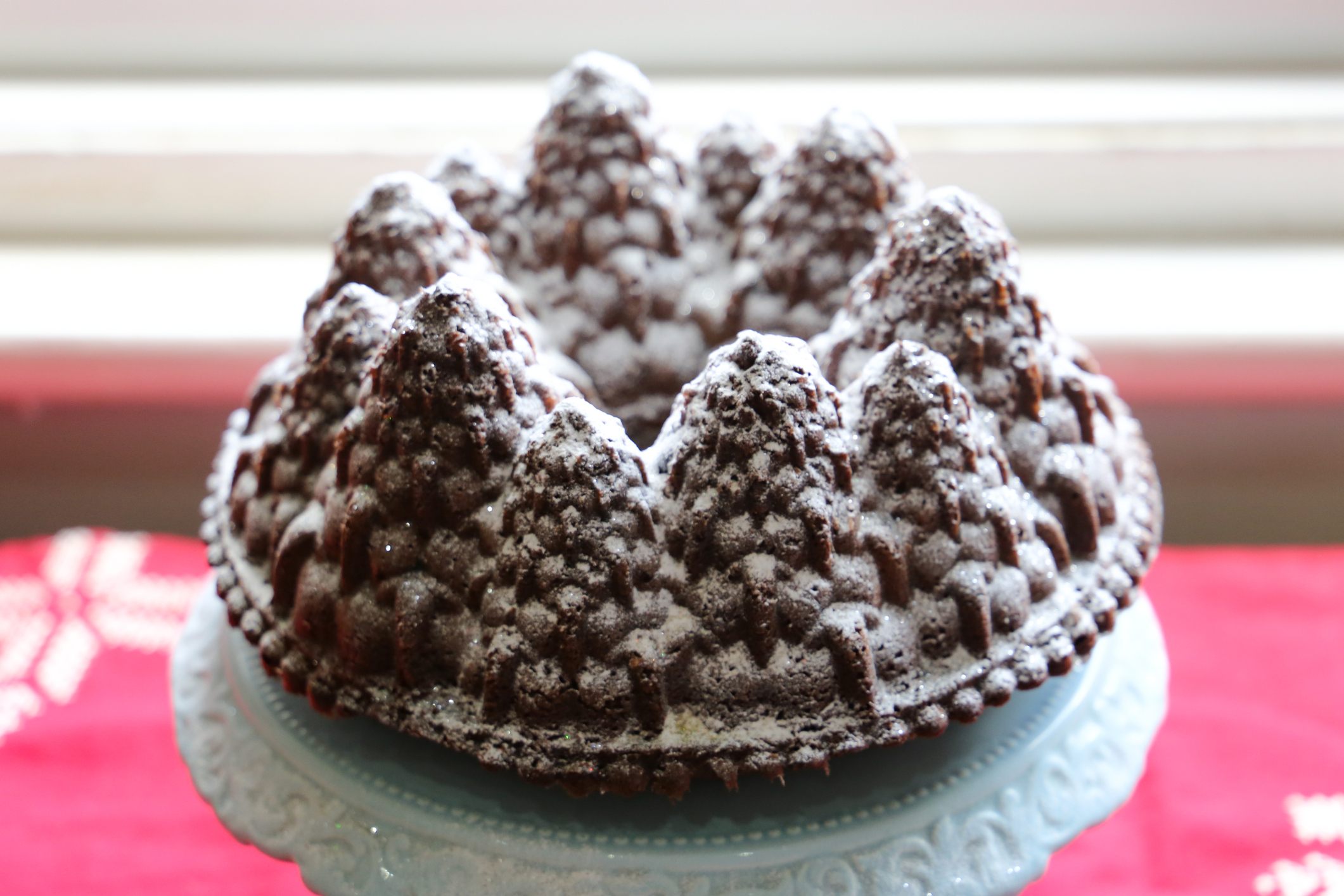
Every generation has their kitchen gadgets, but most end up at yard sales or Goodwill after the thrill is gone. You’d think that when the Tunnel of Fudge trend petered out, so too would the Bundt pan.
Williams has his own opinions as to why we’re still buying. He points to the fact that the pans themselves are durable and American-made, and that the cakes slice easily and neatly. But in the end, he gives the verbal equivalent of a shrug over the phone. “Honestly, I have wondered the same thing.”
Personally, I think it comes down to a centuries-long American obsession with homey, dense cakes that are perfect for potlucks and sympathy gifts. As food writer Greg Patent has pointed out, as far back as the 1700s Americans whipped up pound cakes as often as they could, to the point that they “became a symbol of the home: basic cakes, essentially unadorned, that satisfied a common sweet tooth. They were comfort food at its most fundamental.”
The Bundt pan took what Americans already liked, made it more fun and creative, and ensured that it would bake all the way through. Their American-ness even became a joke in My Big Fat Greek Wedding. The Bundt pan was the brainchild of Jewish immigrants, developed by a maker of Scandinavian kitchenware, and had its grand debut via a Catholic Texan homemaker. You can’t get much more American than that.
Gastro Obscura covers the world’s most wondrous food and drink.
Sign up for our regular newsletter.
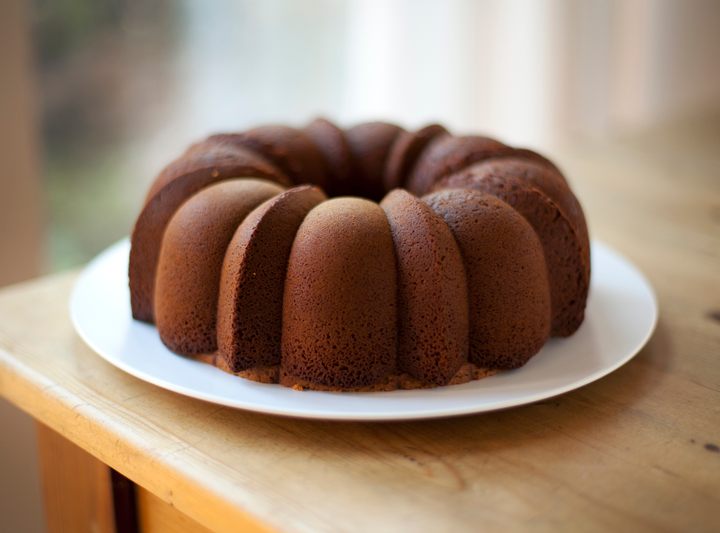



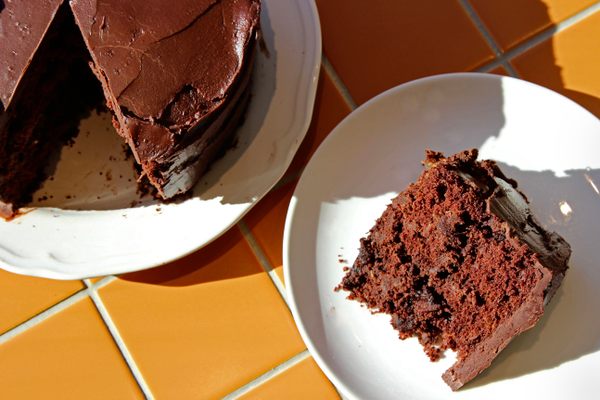


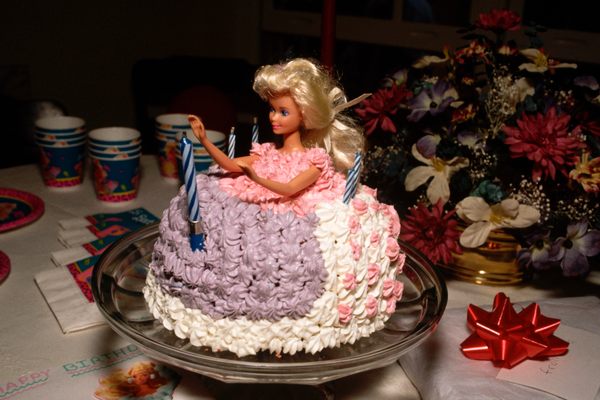


















Follow us on Twitter to get the latest on the world's hidden wonders.
Like us on Facebook to get the latest on the world's hidden wonders.
Follow us on Twitter Like us on Facebook